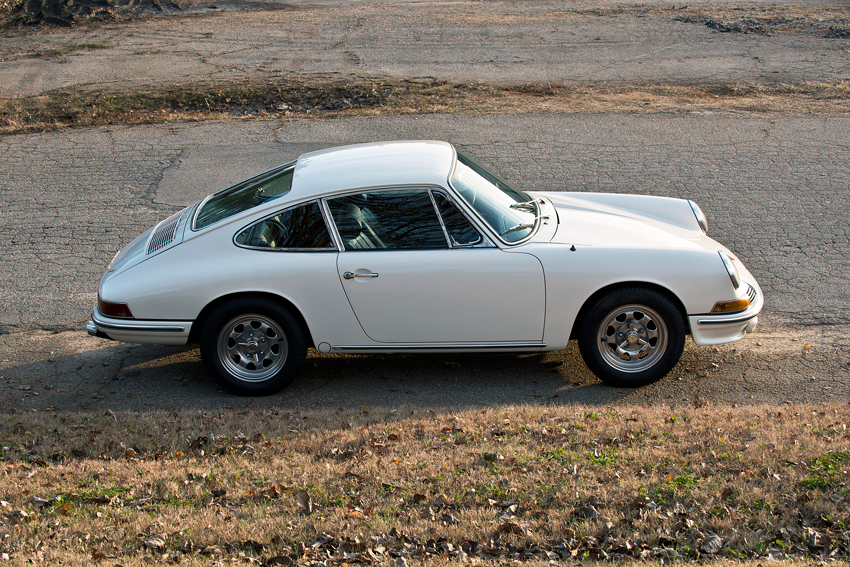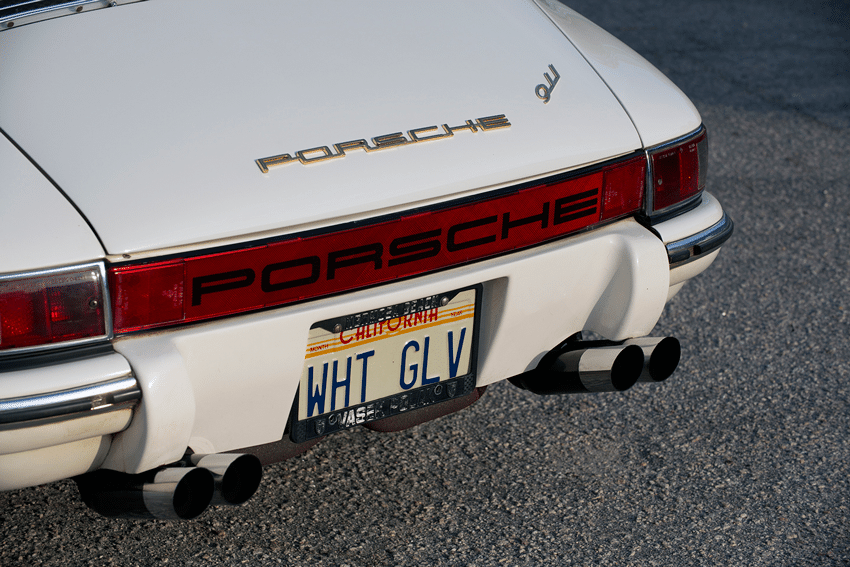It’s common in the world of fine art. It’s S.O.P. – standard operating procedure – among those who handle antiquities, historic documents, or archeological relics. Wear white gloves to handle delicate materials, to touch those objects that might be harmed by human skin oils. Some individuals refer to treating others with deferential – even painstaking and meticulous – respect is giving them “the white-glove treatment.” Classic films show white-gloved waiters serving patrons at nightclubs or on board trans-oceanic ships. Curiously, The Merriam-Webster on-line dictionary suggests the term is rather new. It reports the “first known use of ‘White-glove’ in 1979. Obviously those people never met Paul Dickey.
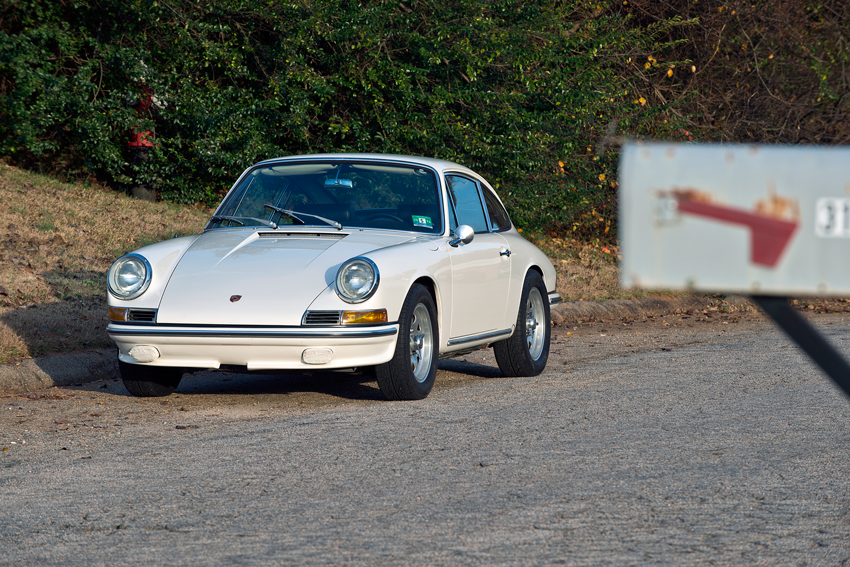
In mid-September 1965, Paul and his wife Helen ordered a 911 from Vasek Polak in Hermosa Beach, CA. Vasek, born in Prague, became a mechanic at the Porsche factory in 1948 when it still was a U.S. Army motor pool service depot. By 1951 he was in New York fixing the first Porsches that importer Max Hoffman brought in. In 1958 he moved to California, settled in Hermosa, and soon after he opened the first exclusively Porsche dealership in the U.S. That kind of dedication suited Paul and Helen perfectly. Their car arrived at Vasek’s shop on December 18, 1965. Vasek’s mechanics, trained under the same apprentice program familiar to their boss, were the only ones Paul trusted to maintain the car.
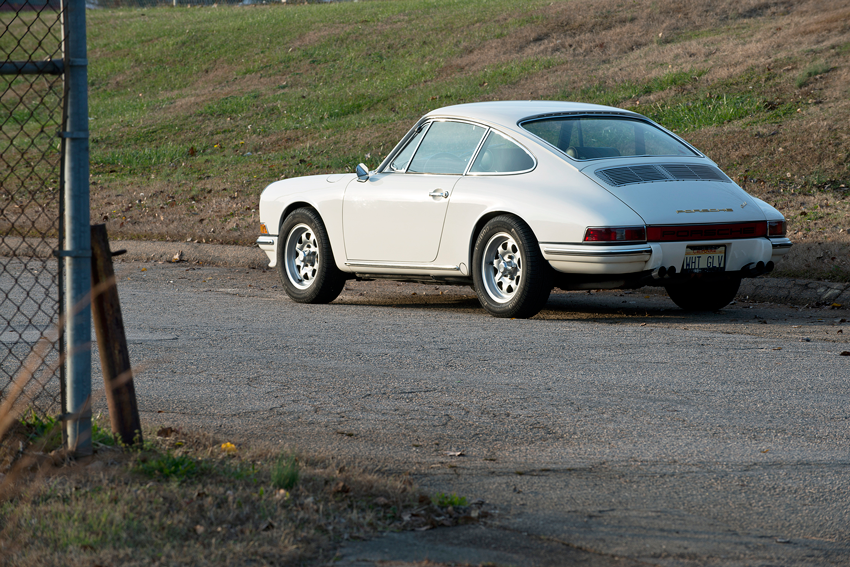
“I’m surprised that anyone would be allowed to service the vehicle,” Paul’s brother Donald wrote in May 2012, “because he wouldn’t allow anyone near it. Although Paul maintained it in perfect condition at all times, he never did any of the work on it himself.” Donald remembered the first time he saw the new Porsche. “I wasn’t allowed to touch it or even sit inside of it. My young 8-year-old daughter wasn’t allowed near the car. To say that Paul was proud and very possessive of his Porsche would be an understatement.” Surprisingly, while Paul seemingly worshiped his car, he also drove it. Enough to have the engine rebuilt. Twice. Enough to deserve a full restoration.
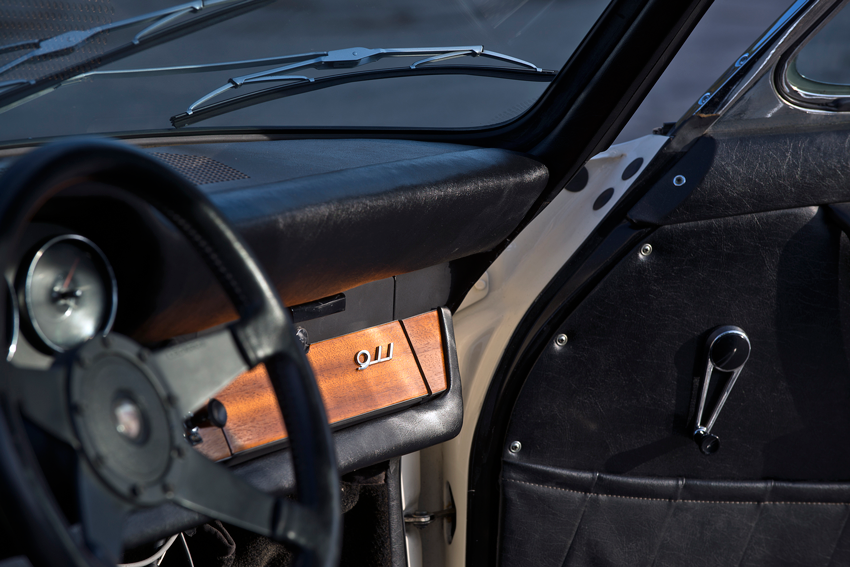
“Paul had his Porsche restored in 1985,” Donald wrote. “He (and his wife) had the paint removed down to the bare metal. Four coats of acrylic enamel were then added with a DuPont hardening agent to each coat – gave it the ‘wet’ look.” DuPont’s legendary Imron paint was known for having that effect on cars and observers.
“In restoration,” Donald continued his report, “95% of the rubber was replaced, new windshield, new glass headlight covers and front trunk/rear seat wool carpeting replaced.”
Engine Attention
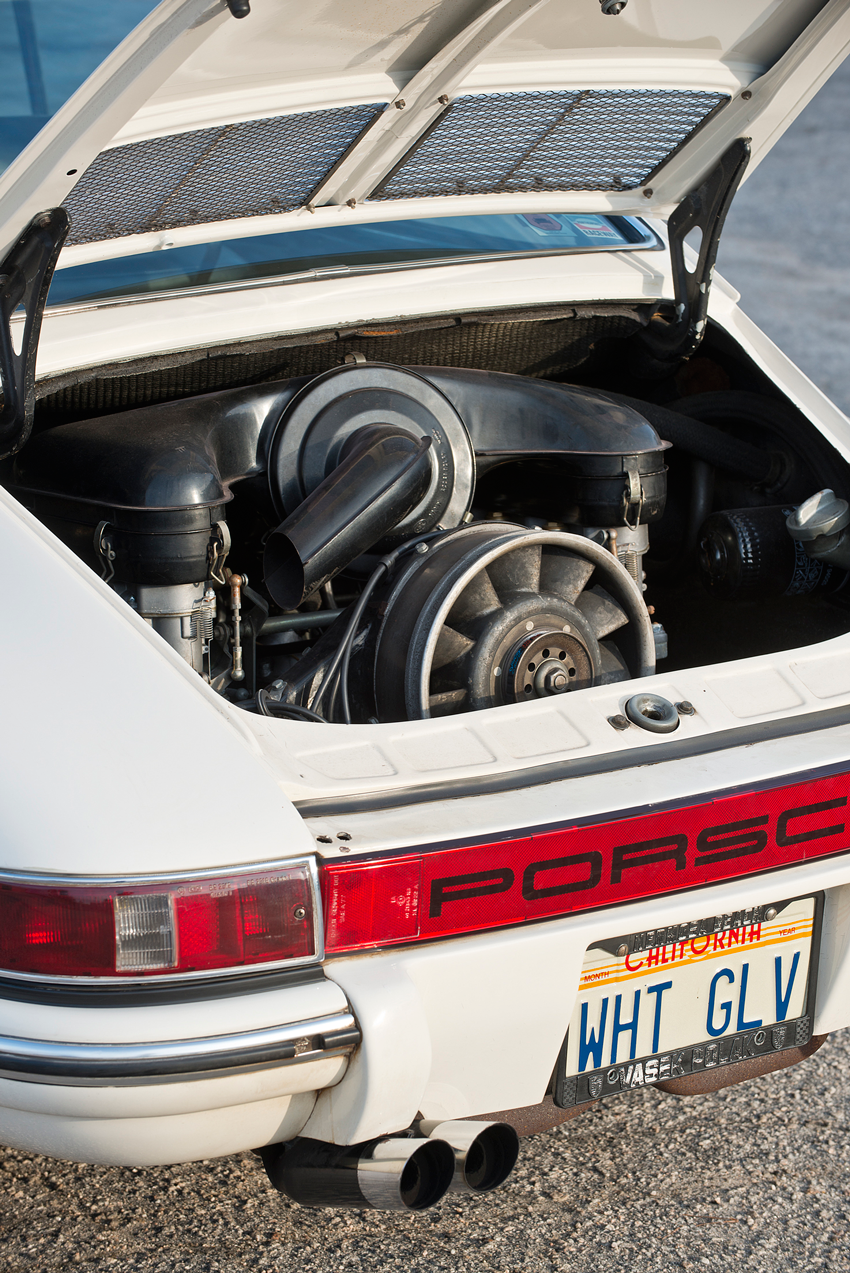
While the first engine rebuild seemed to be faithful to its 2.0-liter origins, Paul succumbed to temptation, presumably delivered to him by Vasek’s highly capable racing mechanics. The engine grew a bit.
“The last one,” Donald continued, “took it up to 2.3 liters – to quote Paul, it was still a pretty hot car. Also, to quote Paul, the license [plate] ‘WHT GLV’ stands for white glove, a real concourse automobile.”
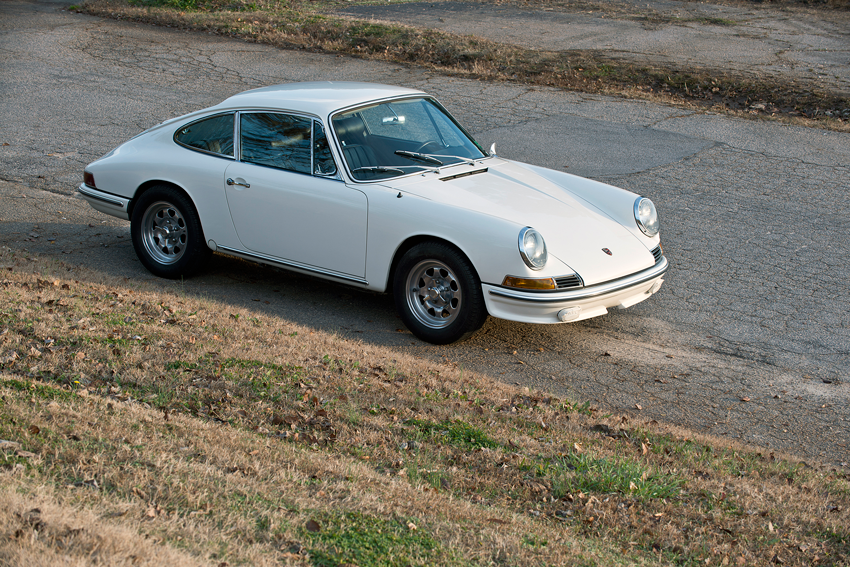
Paul loved, showed, and enjoyed the 911. Over time he added the 1972 front “chin” spoiler that greatly improved stability by deflecting wind around the car instead of letting it go under the front and lift it. A full set of “Jack McAfee” wheels surrounded the car; undoubtedly this was another upgrade suggested by Vasek’s mechanics, some of whom had worked as pit crew for southern-Californian McAfee through the 1950s and 1960s as he raced Porsches up and down the West Coast.
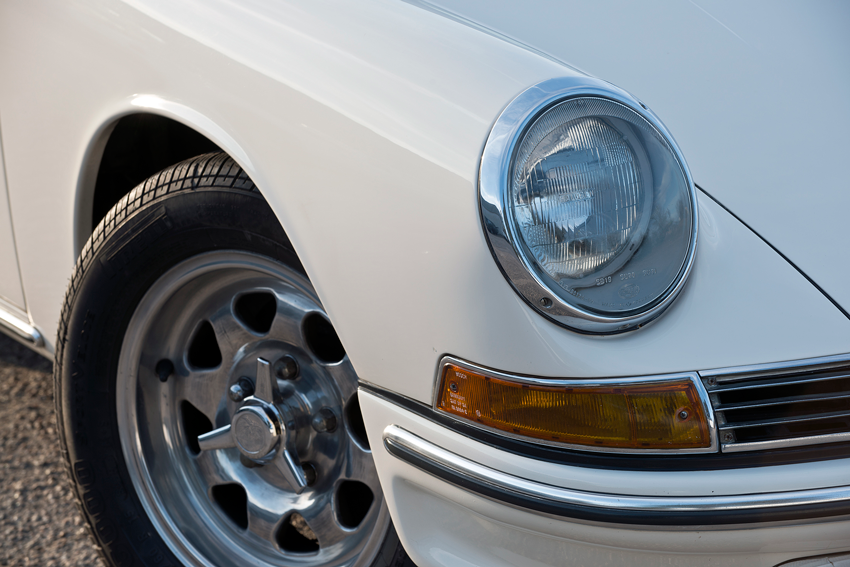
Porsche 911 Buyer’s Guide
A common theme among automotive journalists is “other people’s cars”, or, best of all, “other people’s Porsches.” Without other people’s cars, it is impossible to do history and historic evaluation. In late 2000, Motorbooks International, who had published a book a decade earlier called Porsche Legends – my first on this company and its cars – asked me to do a Porsche 911 Buyer’s Guide. Vasek’s parts manager, Carl Thompson, a friend and a resource, said there was a car that must be in this guidebook: WHT GLV. Carl said the car had more than 300,000 miles on it and was, without question, the best early 911 in southern California.

The car got shot Sunday, April 8, in the days of Kodachrome. It’s likely the process gave Paul and Helen pause. A gigantic French-made Gitzo tripod I used had a telescoping arm that cranked my camera into the interior and later into the engine compartment for intimate close-ups. Paul used a cloth to open the doors (of his own car – according to my notes from the shoot) and it was clear that a ride in this car – to say nothing of a chance to drive it – was not on Paul’s agenda. Four years later, Paul and Helen each had medical close calls. His brother had moved across country but they resumed contact.
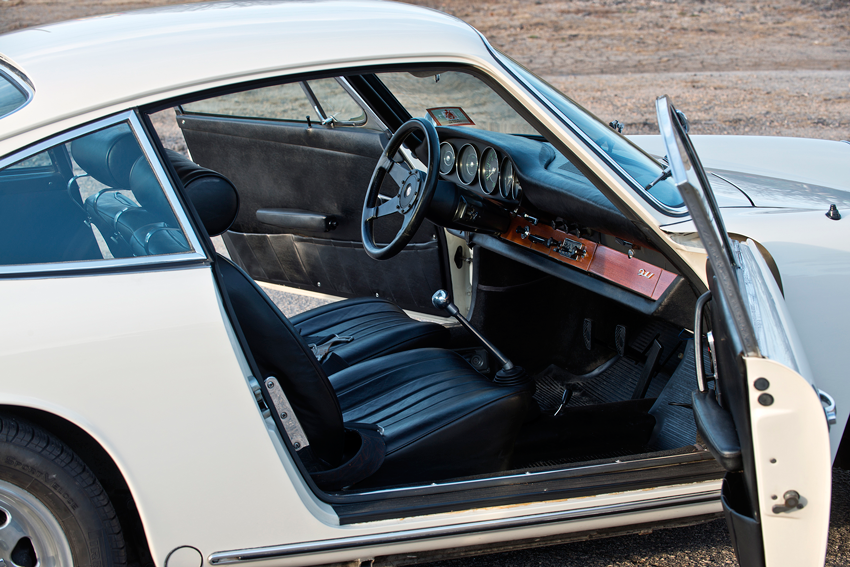
Aftermath
“I learned that Paul’s love for WHT GLV had never subsided,” Donald wrote. “He would tell me about how upset he would become if anyone came close to his vehicle – for fear of leaving any marks on it.” While Paul had to stop driving it in 2006, he continued its white-glove maintenance.
Paul Dickey died in mid August 2011. Helen had gone in early 2008. WHT GLV still was stored in his three-car garage. They had no children and Donald inherited the car. In January 2012, he had it transported to his home. He concluded the story that May.
“At this point in time, my daughter, who is now nearly 55 years old, will not sit in the car because Paul had revered it so much. By the same token, I have never driven it. This vehicle is unequivocally a one-owner car and to me will always be a one-owner car. That one owner will always be Paul Irmal Dickey.”
Handle with care.
